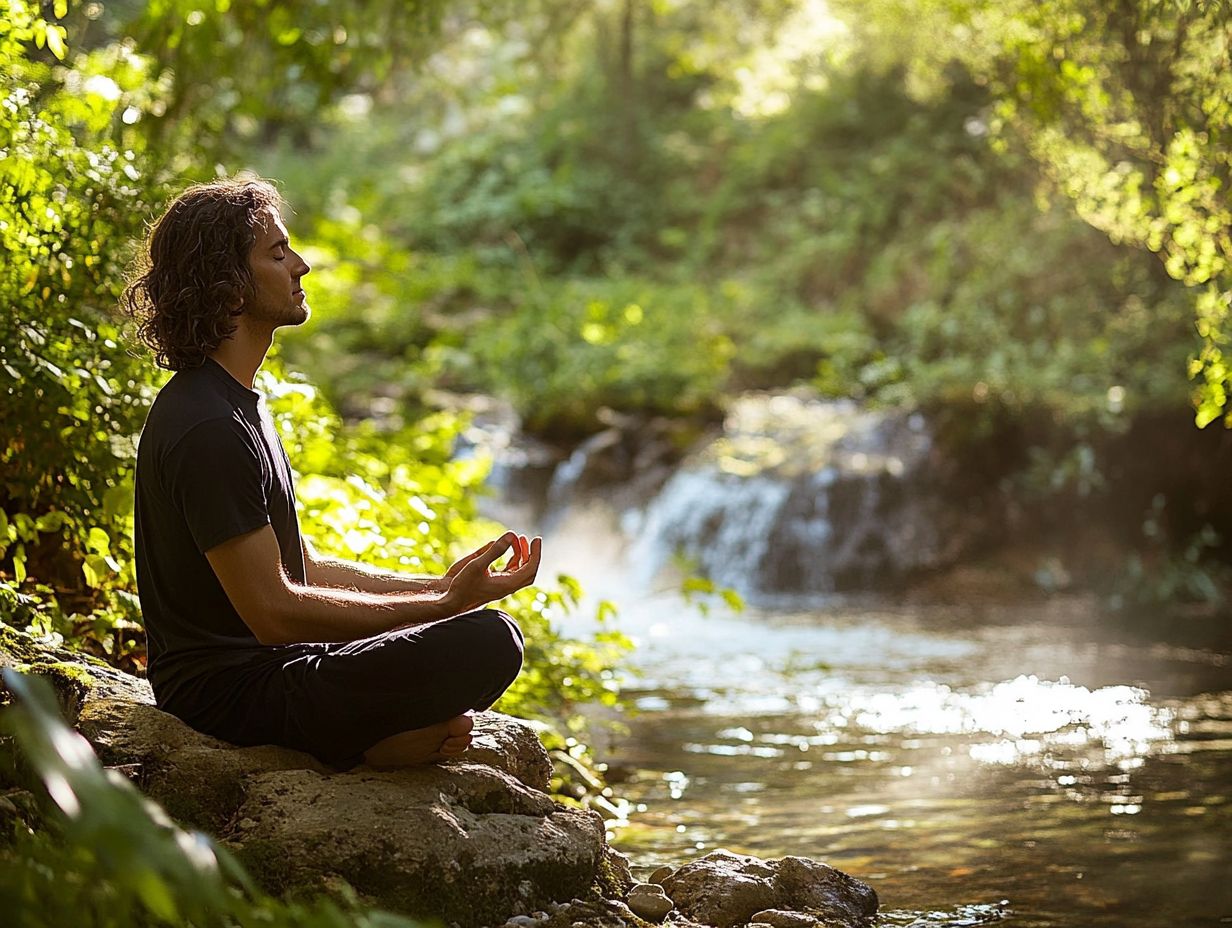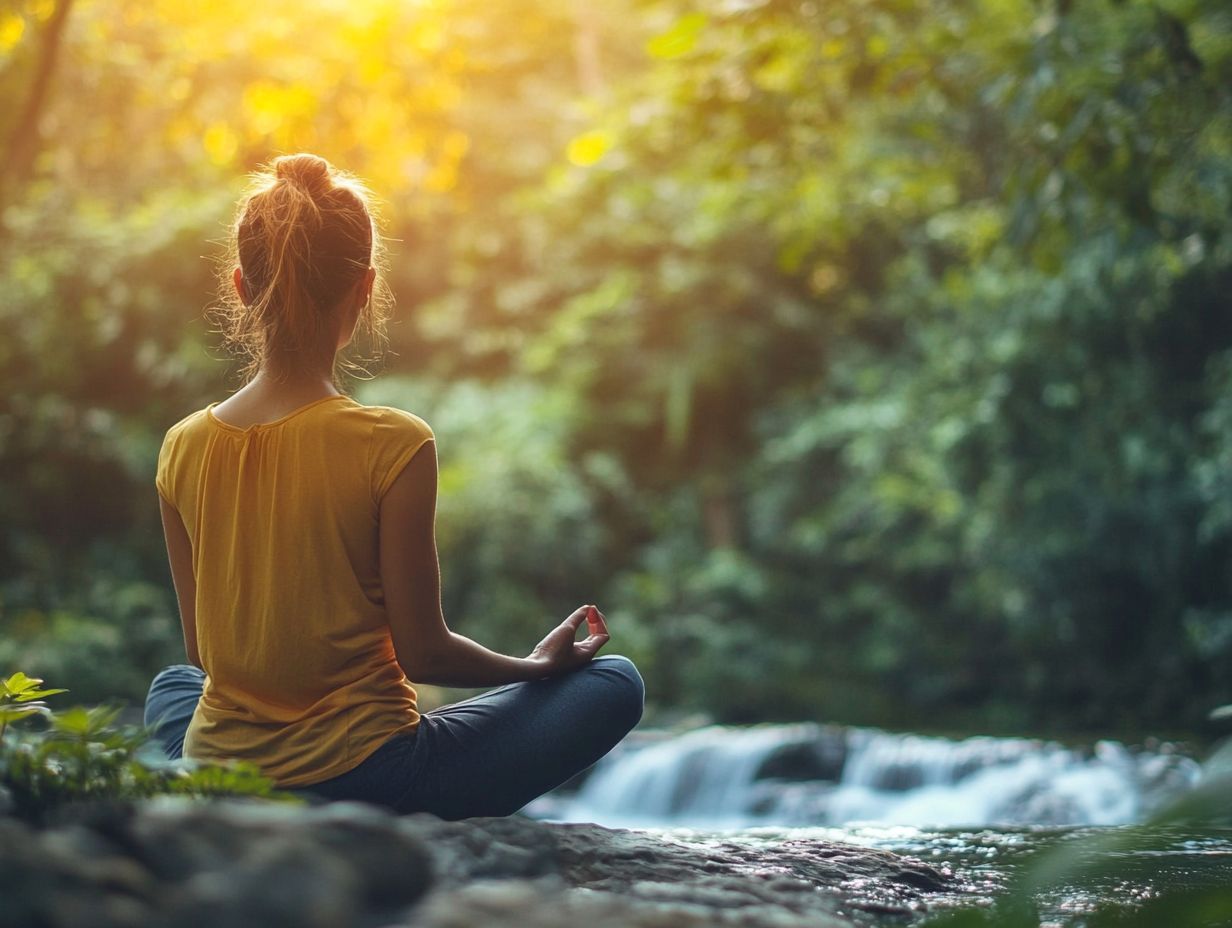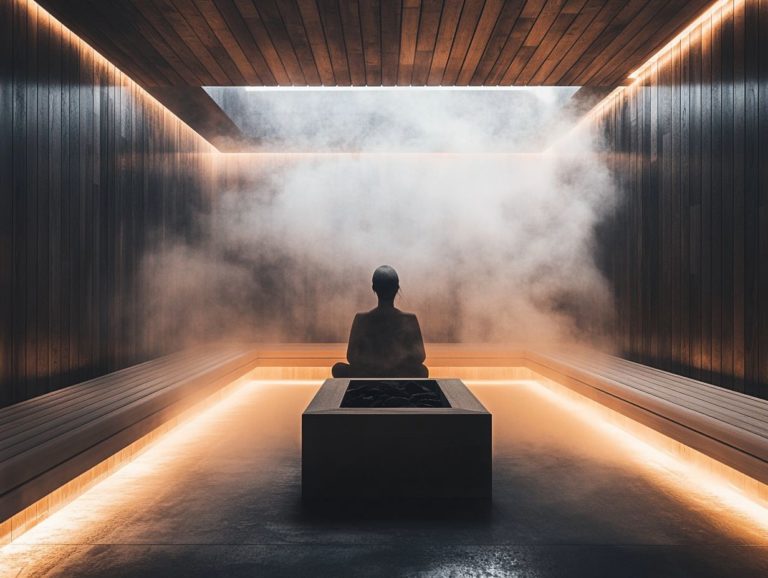The Science of Breathing and Relaxation
Breathing is often overlooked in discussions about well-being. However, it plays a crucial role in relaxation and stress management. Recognizing how your breath impacts both your body and mind can open the door to a wealth of benefits, especially when considering the vital principle of inhaling and exhaling.
This article delves into the science of breathing and illustrates its influence on your physical and mental health. You’ll find a variety of techniques and practical advice for integrating breathing exercises into your daily routine. A simple shift in focus can lead to remarkable enhancements in your overall wellness.
Contents
- Key Takeaways:
- The Importance of Breathing
- The Science of Relaxation
- Benefits of Breathing Exercises
- Types of Breathing Techniques
- Incorporating Breathing into Daily Life
- Frequently Asked Questions
- What is the science behind breathing and relaxation?
- How does controlled breathing promote relaxation?
- What are the benefits of practicing breathing and relaxation techniques, especially for those dealing with anxiety disorders and stress?
- Can anyone practice breathing and relaxation techniques?
- How often should one practice breathing and relaxation techniques?
- Are there any risks associated with practicing breathing and relaxation techniques?
Key Takeaways:

- Breathing is a crucial aspect of relaxation and stress management.
- Proper breathing techniques can benefit both your body and mind.
- Incorporating breathing exercises into daily life helps create a more relaxed state.
The Importance of Breathing
Breathing is essential for life and impacts not only your physical health but also your emotional well-being and mental clarity. The simple act of inhaling and exhaling regulates your stress response, manages anxiety, and fosters relaxation. This process engages the vagus nerve, a key part of your nervous system that helps relax your body.
Controlled breathing techniques allow newborns to instinctively draw their first breaths, laying the foundation for lifelong respiratory health. By understanding the significance of breathing, you can unlock profound improvements in your healthcare journey and overall quality of life as you explore various methods to harness its power for relaxation and emotional stability, including the role of saunas in stress management.
Understanding the Role of Breathing in Relaxation
Breathing is a cornerstone of relaxation, enabling you to alleviate stress and emotional discomfort. When you engage in deep breathing techniques, your body undergoes physiological changes that activate the relaxation response. This process slows your heart rate and reduces blood pressure, gently guiding your body from tension to tranquility while enhancing respiratory control.
In this context, mindful breathing serves as your anchor. By focusing your awareness and releasing racing thoughts, you create a space to connect with the present moment. This nurturing of peace and grounding can transform emotional distress into clarity and comfort.
The Science of Relaxation
The science of relaxation involves a complex interplay of physiological processes intricately tied to your breathing patterns. This reveals profound insights into the mechanisms underlying your stress response and emotional well-being.
How Breathing Affects the Body and Mind

Breathing profoundly influences both your body and mind. It acts as a vital channel for energy, or prana, and facilitates the flow of qi and pneuma elements essential for optimal health.
When you concentrate on your breath, you may notice a significant reduction in stress and anxiety levels. This awareness fosters a deeper connection to the present moment, aiding in emotional regulation and making it easier to navigate daily challenges.
Practices like yoga and mindfulness meditation utilize specific breathing techniques to harness energy, elevate mental clarity, and cultivate a sense of calm. These practices improve emotional stability and can help alleviate symptoms of COPD and panic attacks.
Research shows that controlled breathing stabilizes heart rates and influences emotional states, contributing to a balanced and harmonious existence that greatly enhances your overall well-being.
Benefits of Breathing Exercises
Breathing exercises offer a wealth of advantages for your mental and physical health. They effectively tackle issues like anxiety while enhancing your overall well-being.
Start your journey towards better health and peace today by practicing simple breathing exercises!
Physical and Mental Benefits
The physical and mental benefits of breathing exercises are impressively documented. They demonstrate a remarkable ability to foster relaxation and alleviate stress.
Research reveals that when you consistently practice these exercises, you can significantly decrease anxiety levels. This occurs primarily through the regulation of a part of the nervous system that controls involuntary body functions, guiding you into a state of calm.
You may also find that your lung capacity improves, leading to enhanced overall respiratory health. Emotional stability is another noteworthy benefit; techniques such as deep diaphragmatic breathing can effectively diminish feelings of anger and frustration.
A study from Harvard underscored these findings, showing that participants experienced a marked reduction in stress levels after committing to a regular routine of breathing exercises. Practitioners often share testimonials about gaining a newfound sense of clarity and control over their emotions, highlighting the overall benefits of adopting this simple yet profoundly impactful practice. Additionally, understanding the psychology of sauna safety and relaxation can further enhance your wellness journey.
Types of Breathing Techniques
You have at your disposal a diverse array of breathing techniques, each presenting unique approaches designed to elevate relaxation, mindfulness, and your overall sense of well-being.
Exploring Different Methods

Exploring various breathing techniques unveils a treasure trove of practices designed to nurture relaxation and mindfulness.
Among these, yoga breathing, known as pranayama, focuses on controlling your breath to improve mental and physical health. It beautifully aligns your breath with your posture and intentions.
This method not only calms the mind but also enhances your physical well-being by boosting oxygen flow and sharpening mental clarity.
For example, you might find value in techniques like ‘Nadi Shodhana’ or alternate nostril breathing, which harmonizes energy channels and eases anxiety. Likewise, mindfulness meditation invites you to use your breath as an anchor, cultivating awareness of the present moment.
By weaving short sessions of both practices into your daily routine, you can unlock improved emotional regulation and a profound sense of serenity.
Incorporating Breathing into Daily Life
Make breathing techniques a part of your daily life to feel calmer and more centered! This practice proves invaluable for anyone seeking a calmer, more centered life, particularly for individuals managing anxiety and emotional discomfort.
Practical Tips for Relaxation and Stress Management
Practical tips for relaxation and stress management can significantly enhance the impact of breathing techniques in your daily life.
Don’t wait! Start using these breathing techniques today to feel an immediate difference. By incorporating these exercises into moments when stress tends to spike like during a chaotic morning rush or just before a high-stakes meeting you can cultivate a refreshing sense of calm.
For example, taking a few minutes to engage in deep breathing while waiting in line or enjoying a brief break at work can act as a vital reset.
Achieving mindfulness comes from focusing solely on your breath, counting each inhale and exhale, and letting distractions gently fade into the background.
Incorporate intentional breathing before bedtime to help your mind relax and promote better sleep, enhancing your overall well-being while fostering a spirit of mindfulness.
Frequently Asked Questions
What is the science behind breathing and relaxation?

The science of breathing and relaxation is based on the connection between the mind and body. It explores how controlled breathing techniques can have a positive impact on our physical and mental well-being.
How does controlled breathing promote relaxation?
Controlled breathing triggers the parasympathetic nervous system, which helps to calm the body and reduce stress hormones. It also increases oxygen flow, leading to a feeling of calm and relaxation.
What are the benefits of practicing breathing and relaxation techniques, especially for those dealing with anxiety disorders and stress?
Practicing breathing and relaxation techniques improves your health and well-being! These techniques can significantly reduce stress and anxiety, enhance focus, and lower blood pressure.
Can anyone practice breathing and relaxation techniques?
Absolutely! Anyone can practice these techniques, regardless of age or fitness level. They re simple to learn and can be done by everyone, from newborns to seniors!
How often should one practice breathing and relaxation techniques?
Practice these techniques daily for at least 10-15 minutes for the best results! Even just a few minutes of deep breathing can significantly benefit your mind and body.
Are there any risks associated with practicing breathing and relaxation techniques?
There are no known risks to practicing these techniques! If you have any health concerns, it s wise to consult a healthcare professional before starting.






